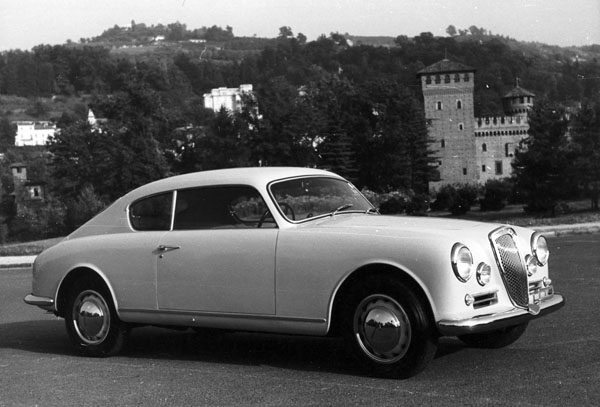
The Lancia Aurelia was the world’s first Grand Touring (GT) car. But that is not the only reason it will be remembered. It also had the first production V6 engine, with overhead valves and a capacity of 2541 cc. As well it had a semi-trailing arm, independent rear suspension which set a continuing trend, especially when linked with a transaxle combining the gearbox and rear axle for ultimate balance.
Another first it scored was in the use of radial-ply tyres to further improve its handling. Of course, Lancia has always been an innovative car manufacturer, being the first to use unitary construction where the body and chassis are combined for maximum rigidity and strength, as well as a number of other inventions and innovations along the way.
A keen yachtsman, Vincenzo Lancia gained inspiration from sailing boats and from observing how they performed. He pondered on how much stronger the steel hull of his yacht was than the chassis of the cars he made. He became fascinated with aerodynamics, seeing little difference between the way a car ploughed through the air and a ship through the water.
Finally, he determined to build a car with a hull like that of a ship. The development of the unitary construction required an entirely new approach to suspension designs. The stiff springs and beam axles much favoured at the time were fine when used with a whipping chassis but a rigid machine would bounce from bump to bump and be very difficult to steer. So, Lancia chose an independent front suspension system to use with this construction process.
The Aurelia made its first appearance at the Turin Motor show in April 1950. This model was codenamed B10 and had a 1.5-litre engine. In 1951 the wheelbase was shortened and the engine enlarged to 2.0-litre for a new model codenamed B20, produced in a fixed-head coup‚ form. The engine continued to be modified and enlarged to 2500 cc which was fitted to a low-line bodyshell as the Aurelia 2500GT of 1953.
Twenty versions of the Aurelia were made, ranging from long-wheelbase taxis to estate cars, with all sorts of special coachwork, before it was replaced by bigger, more luxurious cars.
The Aurelia led to the building of the D50, a grand prix car, before Ferrari took over the project complete with its creator Vittorio Jano, possibly the greatest of all Italian motor engineers and the creator of the Aurelia. Much of the credit for the V6 Ferrari engines which followed was given to Enzo Ferrari’s son Dino, but in reality, they were largely the work of Jano.